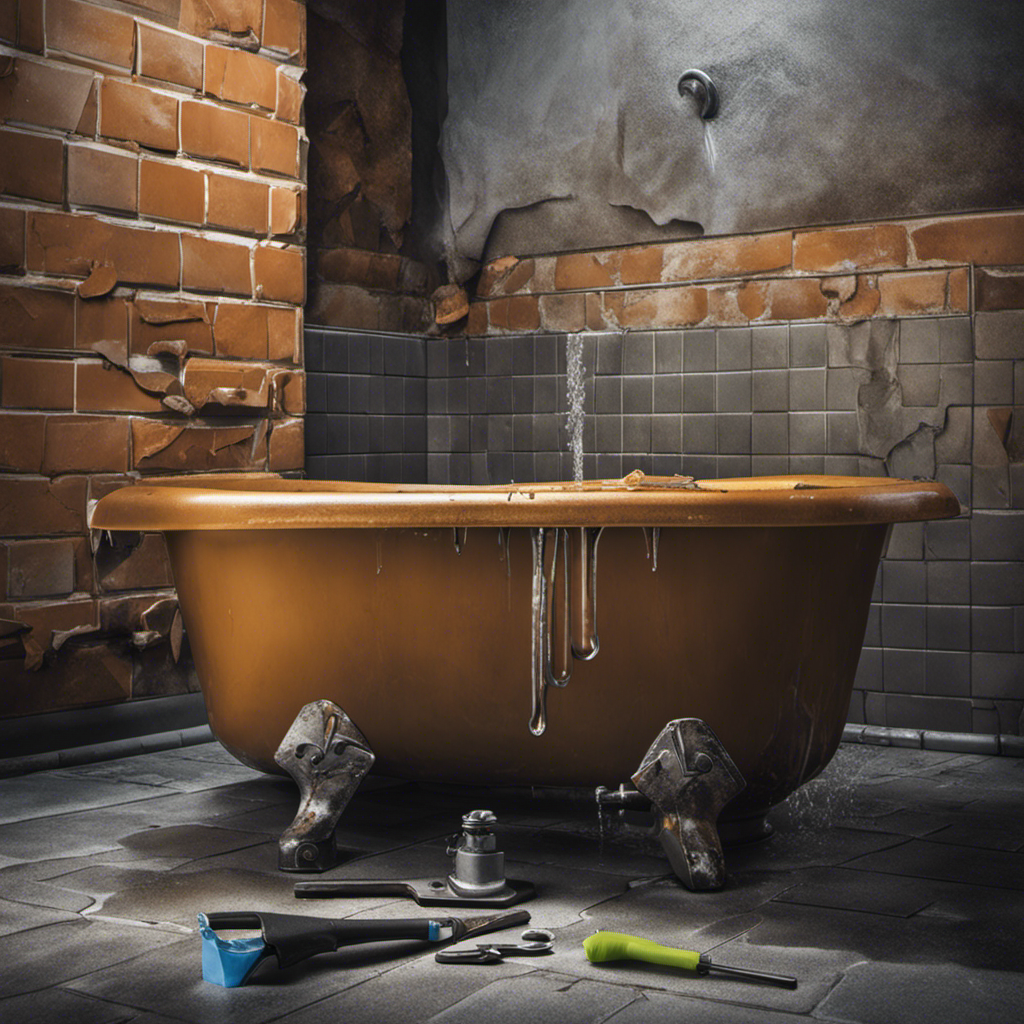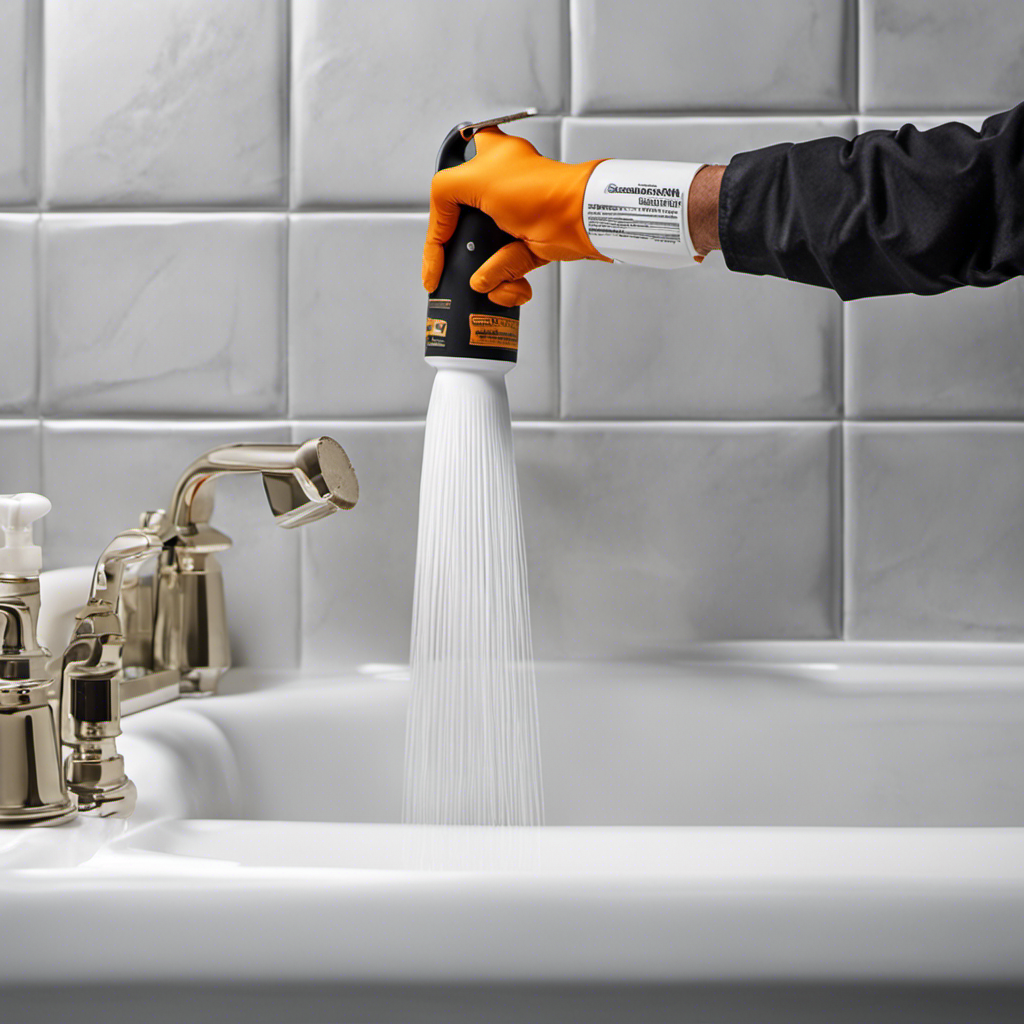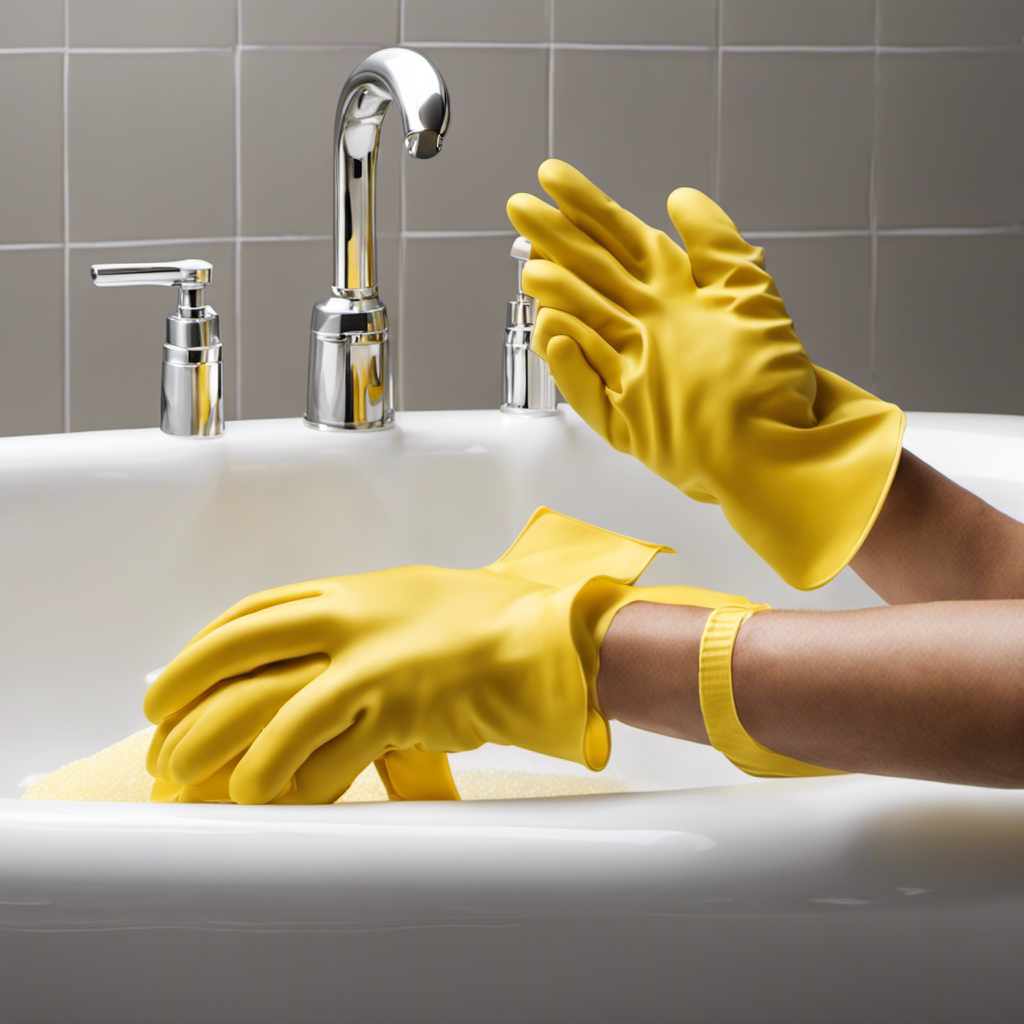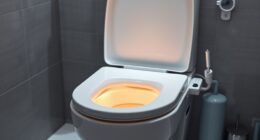Are you tired of staring at that broken bathtub, feeling like it’s mocking you every time you step into the bathroom? Well, fear not!
In just a few simple steps, you can fix that tub and restore your sanity. With a little bit of elbow grease and the right tools, you’ll be soaking in a perfectly functioning bathtub in no time.
So roll up your sleeves and get ready to conquer that broken tub once and for all!
Key Takeaways
- Assess the severity of the damage and its impact on structural integrity
- Gather the necessary tools and materials for the repair
- Safely remove the broken bathtub component
- Determine if the component can be repaired or needs replacement
Assess the Damage
You should start by assessing the damage to your bathtub.
Begin by evaluating the severity of the damage. Take a close look at any cracks, chips, or leaks that may be present. Determine whether the damage is superficial or if it affects the structural integrity of the bathtub.
Next, you need to determine the cause of the damage. Was it due to wear and tear over time, or was it caused by a specific incident, such as dropping a heavy object? Understanding the cause will help you decide on the best course of action for repairs.
Take note of any other issues, such as discoloration or loose fixtures, as these may also need to be addressed.
Gather the Necessary Tools and Materials
First, gather all the necessary tools and materials to complete the task of repairing the bathtub. When it comes to common bathtub problems, such as chips, cracks, or leaks, there are cost-effective bathtub repair methods you can try before calling in a professional.
To fix these issues, you will need a few essential items. Start by getting a bathtub repair kit, which usually includes epoxy resin, a hardener, sandpaper, and a putty knife. You may also need a hairdryer or heat gun, depending on the type of repair you are doing. Additionally, gather some masking tape, a cloth, and a cleaning solution to prepare the surface properly.
Once you have all these tools and materials, you can move on to removing the broken bathtub component.
Remove the Broken Bathtub Component
To proceed with the repair, start by carefully removing the damaged piece from the bathtub. Safety should always be your top priority when handling broken components.
Follow these steps to remove the bathtub safely:
- Put on protective gloves and safety goggles to protect yourself from any sharp edges.
- Use a screwdriver to carefully remove any screws or bolts securing the damaged component.
- Gently pry the broken piece away from the bathtub using a pry bar or a putty knife.
- If the component is glued or caulked, use a utility knife to carefully cut through the adhesive.
- Once the broken component is removed, dispose of it properly according to your local regulations for hazardous waste.
Repair or Replace the Broken Component
If the damaged component cannot be repaired, it may be necessary to consider replacing it. Hiring a professional can ensure that the job is done correctly and safely. They have the expertise and experience to identify the best replacement option and install it properly.
However, if you prefer to tackle the repair yourself, there are some temporary fixes you can try. For example, using epoxy or waterproof tape to seal small cracks or applying a patch kit for fiberglass or acrylic tubs. These temporary fixes can buy you some time until a permanent solution is found. Remember, though, that they are not long-term solutions and may not provide a lasting fix.
Transitioning into the next section, once you have determined whether to repair or replace, the next step is to reinstall the fixed bathtub component.
Reinstall the Fixed Bathtub Component
Once the component is successfully repaired, it’s time to reinstall it in the bathtub.
Start by ensuring that the surrounding area is clean and free from any debris. This will help prevent any further damage to the repaired component.
Apply a waterproofing sealant to the edges of the component before placing it back into position. This will create a watertight seal and prevent any leaks. Make sure to follow the manufacturer’s instructions when applying the sealant.
Once the component is in place, secure it using the appropriate screws or fasteners. Finally, double-check that everything is properly aligned and tightened.
Regular maintenance is key to prolonging the lifespan of your bathtub. Clean it regularly using mild soap and warm water, and avoid using abrasive cleaners that can damage the surface.
Additionally, periodically check for any signs of wear or damage and address them promptly to prevent further issues.
Frequently Asked Questions
How Do I Prevent My Bathtub From Breaking in the First Place?
To prevent bathtub damage, follow these maintenance tips: regularly clean and inspect your bathtub for cracks or leaks, avoid using abrasive cleaners, install a non-slip mat, and be mindful of the weight limit.
Can I Use a Temporary Fix for My Broken Bathtub Until I Can Get It Repaired?
Sure, you can definitely use temporary fixes for your broken bathtub until you can get it repaired. There are several DIY bathtub repair methods that can help you make it usable again in the meantime.
Are There Any Safety Precautions I Should Take While Fixing My Broken Bathtub?
To fix a broken bathtub, first ensure your safety by wearing appropriate safety equipment such as goggles and gloves. Then, follow these steps: assess the damage, gather necessary tools, and carefully repair or replace the broken parts.
How Long Will It Take to Repair a Broken Bathtub?
To repair a broken bathtub, the time it takes depends on the extent of the damage and the repair techniques used. Be aware that the cost of bathtub repair can vary, so it’s best to consult a professional for an accurate estimate.
What if I Encounter Unexpected Issues While Repairing My Broken Bathtub?
If unexpected issues arise while fixing your broken bathtub, don’t panic. Common mistakes can be avoided by following these troubleshooting tips: check for leaks, ensure proper fittings, and consult a professional if needed. Stay calm and fix it right!
Conclusion
In conclusion, fixing a broken bathtub is a task that can be accomplished with the right tools and materials. By assessing the damage and determining whether repair or replacement is necessary, you can effectively restore your bathtub to its former glory.
Interestingly, did you know that according to a study conducted by the National Association of Home Builders, bathroom renovations have one of the highest returns on investment, with homeowners recouping an average of 70-80% of their remodeling costs?
So not only will fixing your broken bathtub improve the functionality of your bathroom, but it can also add value to your home.










